Key Points:
- Lake Coeur d’Alene is the clearest lake in Idaho and in 10th place out of 14 in the United States’ clearest lakes list.
- It is so clear that you can see at least 15 feet down through the cold, blue water. Buried at the bottom is a “steamship graveyard.”
- It’s Idaho’s third largest lake and measures 25 miles long, 10 miles across at its widest point, and an average depth of 100 feet.
In a state with more than 2,000 lakes, many of them crystal clear beauties, it’s hard to choose the clearest. However, Lake Coeur d’Alene is thought to be the clearest lake in Idaho.
This popular tourist attraction offers 135 miles of shoreline, campgrounds, sandy beaches, hiking trails, boating, and fishing. All of it is among the perfectly crystal-clear waters of Lake Coeur d’Alene.
Read on to discover the natural beauty of Idaho’s clearest lake.
About Lake Coeur d’Alene, the Clearest Lake in Idaho
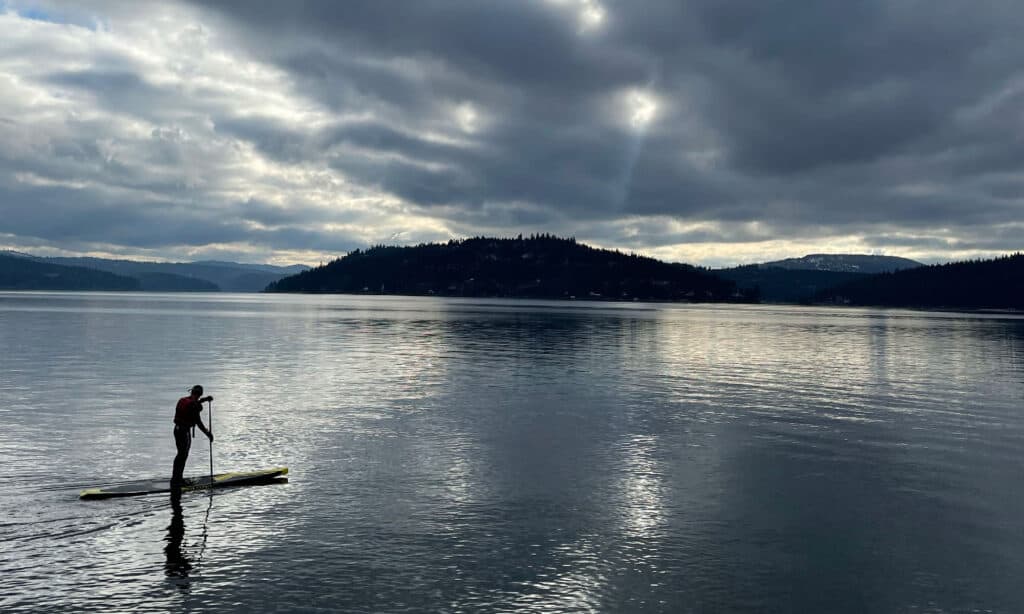
Lake Coeur d’Alene is famous for its spectacular views, pristine beauty, crystal-clear cold water, and tranquil wilderness.
©iStock.com/Chase Cabrera
Coming in at 10th place out of 14 in the United States’ clearest lakes list, Lake Coeur d’Alene is the clearest lake in Idaho.
At 25 miles long, 10 miles across at its widest point, and an average depth of 100 feet, Lake Coeur d’Alene is the third largest lake in Idaho. Nestled among the picturesque Rocky Mountains, the lake was formed during the last Ice Age when the continental ice caps began melting and moving away. The location of the lake was previously the valley of a river. The melting ice masses left behind glacial lobes, large swaths of land, which formed as the ice slowly receded.
A natural lake controlled by the Post Falls Dam, the lake is primarily fed by the Coeur d’Alene and St. Joe Rivers. Its outlet forms the Spokane River, which flows to the Pacific Ocean. The level of the lake is partially controlled by the dam, which also produces power for the city of Coeur d’Alene on the northern banks of the lake.
Why Lake Coeur d’Alene Is So Clear
The waters are crystal clear. So clear that you can see at least 15 feet down through the cold, blue water. But what makes a lake clear versus murky? And why is Lake Coeur d’Alene so clear?
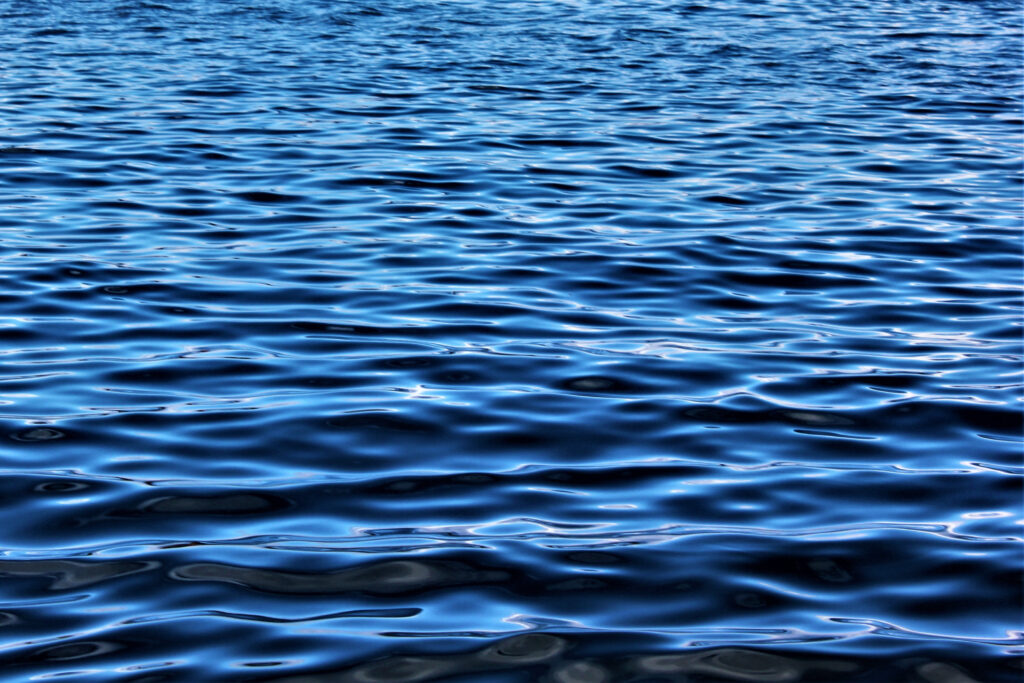
Lake Coeur d’Alene is the clearest lake in Idaho.
©Floridian/Shutterstock.com
It’s not that clear lakes are cleaner than murky waters. The clarity of a lake is due to low levels of particles (such as sediment) in the water. The low levels of nutrients also result in restricted levels of algae. A lack of plant nutrients, such as nitrogen and phosphorous, results in clear blue water. Pure water absorbs longer wavelength lights (such as red, orange, and yellow). This means the blue light reflects outwards, making the lake waters appear to be a pristine shade of blue. Blue lakes with their lower concentrations of algae and organic matter only support certain species of fish.
Why Are Many Lakes Murky?
Lakes tinted with a greenish-brown color are considered to be murky. Murky lakes contain more plant nutrient-rich waters, algae, and organic matter than clear lakes. When the soil around the lake contains high levels of nitrogen and phosphorous, algae thrive. High levels of algae will contribute to murky waters. Algae blooms also support increased fish populations, which further muddies the waters. Further, the chlorophyll in algae can give murky lakes a green hue.
The Unfortunate Mining History of Lake Coeur d’Alene
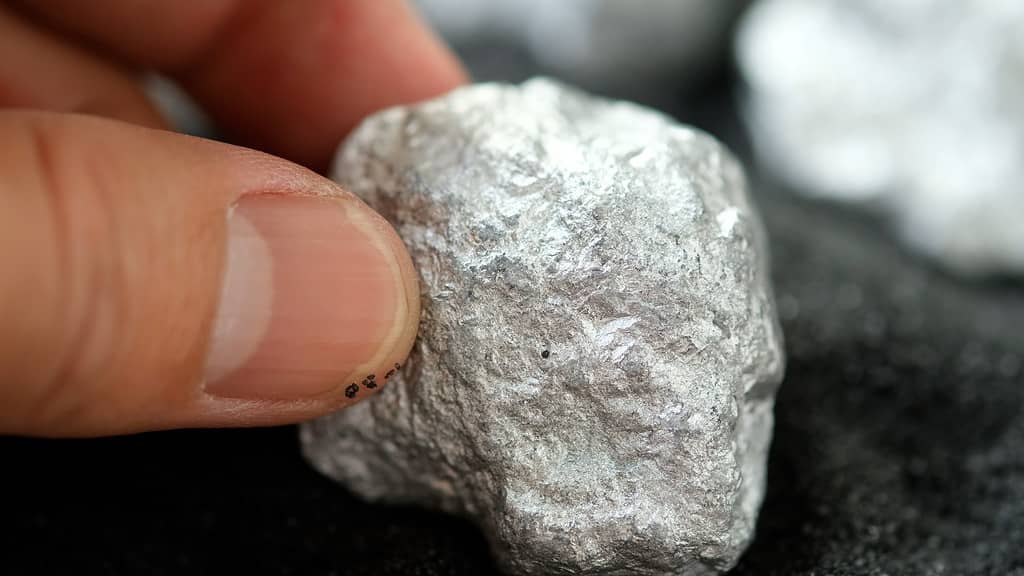
Mining for minerals such as silver left heavy metals at the bottom of Coeur d’Alene Lake.
©iStock.com/Oat_Phawat
A century of mining silver, zinc, and lead has led to pollution of the pristine natural beauty of the lake. Waste from mining activities flowed downstream the river and contaminated over 75 million tons of lake sediment with high levels of lead, cadmium, arsenic, and zinc.
Today, the metals remain buried at the bottom of the lake. The toxic chemicals are embedded in the sediment, kept there by a balance of oxygen in the water. But if algae blooms were to rise, they could contribute to a loss of oxygen. This would disturb the balance, allowing the chemicals in the lake bottom to be released and causing a massive pollution event for the lake.
However, the Environmental Protection Agency has been working to clean up the contaminated site and continues to monitor the quality of the water. Today, oxygen levels remain steady in the lake.
Where Is Lake Coeur d’Alene Located on a Map?
The lake is located in Kootenai County, in northwestern Idaho in the region considered the panhandle. On the northern end of the lake is the city of Lake Coeur d’Alene. The lake is about 25 miles to the east of Spokane, Washington.
Recreation Around Lake Coeur d’Alene in Idaho

Brave adventurists enjoy jumping off the cliffs and rocks at Tubbs Hill in Lake Coeur d’Alene.
©Nature’s Charm/Shutterstock.com
Lake Coeur d’Alene is famous for its spectacular views, pristine beauty, crystal-clear cold water, and tranquil wilderness. The area is visited by nature lovers, fishermen, birdwatchers, outdoor enthusiasts, and even movie stars.
Some popular water activities include fly fishing, parasailing, wakeboarding, boat cruises, seaplane rides, kayaking, and dining in a floating restaurant.
Other attractions include the Stoneridge Golf Resort with its 18-hole championship golf course and 6 pickleball courts. Timberline Adventures features ziplines and sky bridges
The 120-acre nature area Tubbs Hill is a popular destination. The park is bordered by the lake on the west, south, and east sides. A favorite activity of visitors is leaping off the rocks of Tubbs Hill into the cool waters below.
Another local attraction is the Seven Stars Alpaca Ranch, a 40-acre property open for tours to the public and home to not only alpacas, but other farm animals, including llamas, mini goats, and mini horses.
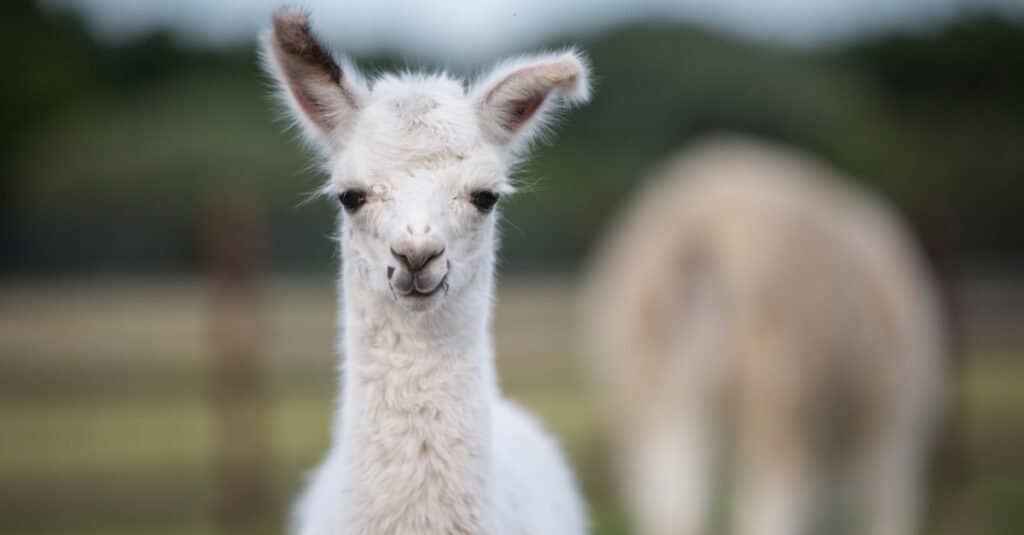
The nearby Seven Stars Alpaca Ranch is a working ranch near Lake Coeur d’Alene.
©Inesmeierfotografie/Shutterstock.com
What’s at the Bottom of Lake Coeur d’Alene?
You can find more than fish at the bottom of the lake. Buried at the bottom is the “steamship graveyard.” Several steamboats that used to haul logs and ore, and transport passengers now rest at the bottom in ruins. Divers like to check out the shipwrecks during scuba dive excursions to the bottom to recover treasures and trinkets.
Legend has it that a steamboat filled with valuable silver and lead ore sunk to the bottom of the lake in the late 1880s. Numerous attempts have been made to recover the fortune, with no luck. The ore presumably is still sitting at the bottom of the lake.
Another odd thing at the bottom of the lake is the number of Model T cars there. In the early 1900s, when the Model T became widespread, people would attempt to drive across the frozen lake in the winter to save time from having to travel all the way around. However, on several occasions, the ice didn’t hold, and the car ended up resting at the bottom of the lake.
What Wildlife Lives in the Area?
The area in and around the lake is home to many diverse habitats hosting a wide variety of fish, animals, and birds. The Idaho panhandle is home to some remarkable species of mammals, including elk, moose, woodland caribou, wolves, and grizzly bears.
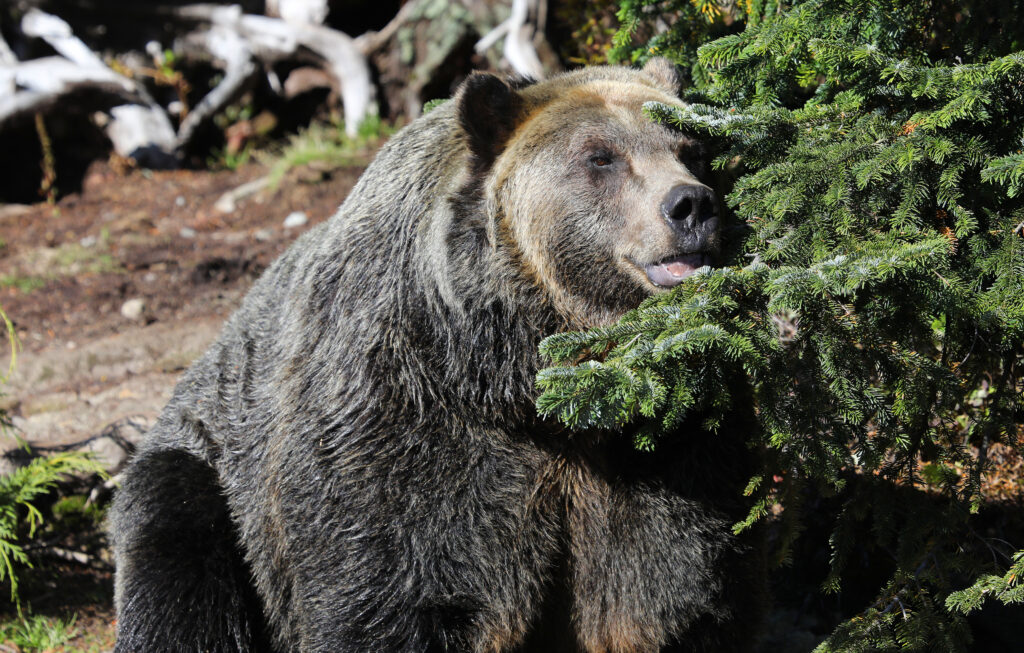
Grizzly bears used to roam all over Idaho, but are now found only in the north.
©Jacqui Martin/Shutterstock.com
You may also see smaller animals including, coyotes, salamanders, beavers, and river otters.
Some even smaller species include the pygmy shrew, the smallest known mammal, and the Calliope hummingbird, the smallest bird in the United States.
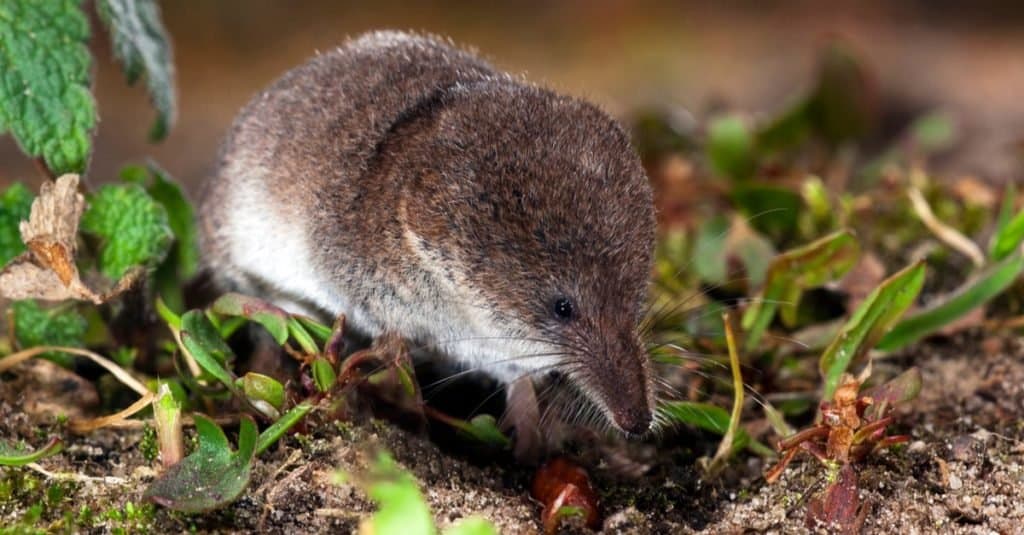
The pygmy shrew, the smallest known mammal, can be found in Idaho.
©Agami Photo Agency/Shutterstock.com
Birds you may encounter are diverse and include:
- Trumpeter swans
- Red-tailed hawks
- Bald eagles
- Osprey
- Cormorants
- Loons
- Herons
- Many owl species, including great horned owls, pygmy owls, and snowy owls.
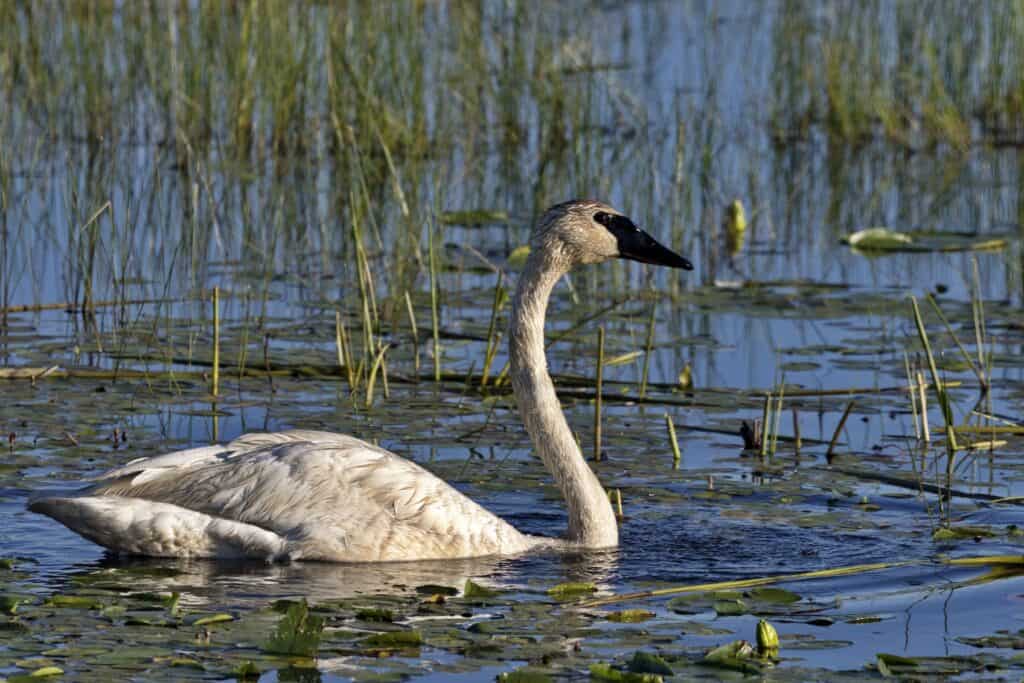
Trumpeter swans live near the waters of Lake Coeur d’Alene.
©Florence-Joseph McGinn/Shutterstock.com
Swimming in the waters are many species of fish, including Chinook salmon, bluegill, lake sturgeon, northern pike, catfish, trout, and bass.
The photo featured at the top of this post is © iStock.com/Chase Cabrera
Thank you for reading! Have some feedback for us? Contact the AZ Animals editorial team.







